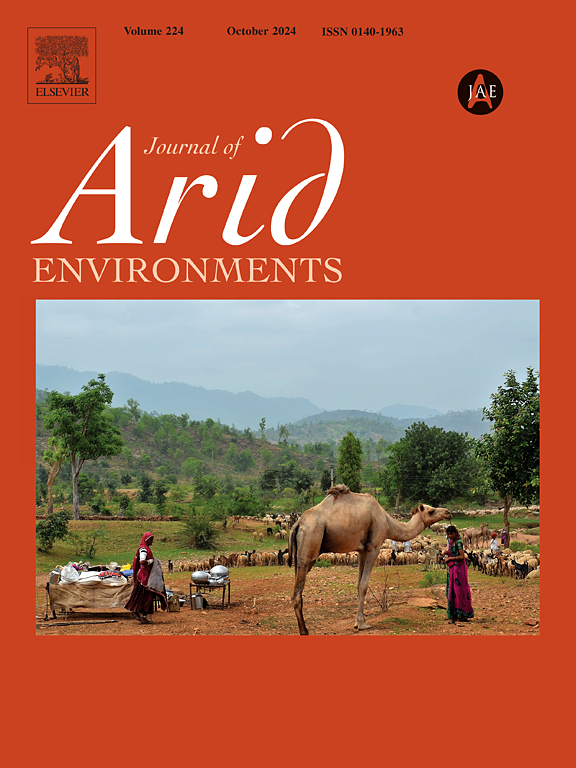Location differences in senescence and leaf macronutrient concentrations for selected tree species in the savannah woodlands of Botswana
IF 2.5
3区 环境科学与生态学
Q2 ECOLOGY
引用次数: 0
Abstract
Trees are a core component of savannah vegetation content, with vital ecosystem functions. Therefore, determining location differences in their senescence time and leaf macronutrient (MN) concentrations can yield indicators of differences in habitat quality. In this work, senescence time and MN levels in three common tree species (Colophospermum mopane, Grewia flava, Vachellia erioloba) in the semi-arid savannah woodlands of Botswana were studied, at three temperature and rainfall-contrasted study sites. Chlorophyll (Chl) levels in sample tree leaves were measured weekly in the March–May (autumn) period using a chlorophyll meter that utilised the blue + red absorption and green reflectance Chl properties. In the same period, sampling tree Green Leaf Index (GLI) values were computed from periodic (approximately every five days) cloud-free 10 m resolution Sentinel-2 MSI images. Some image dates coincided with the Chl measurement dates, which facilitated predictive modelling using GLI values. Leaf MN concentrations were determined once-off, during the peak phenology period. Graphical plots of measured Chl and GLI values indicated the onset of senescence, through the commencement of sustained reductions. Trees in the hotter, more arid site generally had earlier senescence and lower nitrogen and phosphorous concentrations than same species trees in cooler, higher rainfall sites.
博茨瓦纳热带稀树草原上某些树种衰老和叶片大量营养物质浓度的位置差异
树木是草原植被的核心组成部分,具有重要的生态系统功能。因此,确定其衰老时间和叶片宏量养分(MN)浓度的位置差异可以得到生境质量差异的指标。在这项工作中,研究了三种常见树种(Colophospermum mopane, Grewia flava, Vachellia erioloba)在博茨瓦纳半干旱大草原林地的衰老时间和MN水平,在三个温度和降雨量对比的研究地点。利用利用蓝+红吸收和绿反射Chl特性的叶绿素计,在3月至5月(秋季)期间每周测量样品树叶中的叶绿素(Chl)水平。在同一时期,采样树的绿叶指数(GLI)值从定期(大约每5天)无云的10 m分辨率Sentinel-2 MSI图像中计算。一些图像日期与Chl测量日期相吻合,这有助于使用GLI值进行预测建模。在物候高峰期间一次性测定叶片MN浓度。测量的Chl和GLI值的图形图表明衰老的开始,通过持续减少的开始。在较热、较干旱的地点生长的树木通常比在较冷、较高降雨量地点生长的相同树种的树木衰老得更早,氮和磷浓度也更低。
本文章由计算机程序翻译,如有差异,请以英文原文为准。
求助全文
约1分钟内获得全文
求助全文
来源期刊

Journal of Arid Environments
环境科学-环境科学
CiteScore
5.70
自引率
3.70%
发文量
144
审稿时长
55 days
期刊介绍:
The Journal of Arid Environments is an international journal publishing original scientific and technical research articles on physical, biological and cultural aspects of arid, semi-arid, and desert environments. As a forum of multi-disciplinary and interdisciplinary dialogue it addresses research on all aspects of arid environments and their past, present and future use.
 求助内容:
求助内容: 应助结果提醒方式:
应助结果提醒方式:


